Falaris Divine-player is a perennial from the cereal family, which adorns the park areas, summer cottages, take care of rivers. Falaris enjoys a huge demand among gardeners and this is no wonder, because his rich gentle greens is distinguished by high decorativeness. In addition, it is absolutely unaffected to care and resistant to any weather conditions, so even a newcomer to grow it.
FALARIS, description
Falaris (Lat. Phaláris) is often called "silk grass" or "canary". Being a cereal culture, it is actively cultivated in agriculture for billets of feed for livestock. And in the landscape design, Falaris gained popularity thanks to the beautiful view of the motley foliage, which quickly grows in any conditions: in the shade, in the open sun, near the reservoirs.
- Falaris is a cereal plant that quickly forms a tall and lush bush up to 2 m in height.
- Rhizome plants are very smaller and quickly captures the neighboring areas, thereby drowning out other cultures. Such a feature of the canary forces strictly limit the territory of its growth.
- The shape of the leaves in perennials is pointed, and the painting is bright green with white or pale yellow stripes, depending on the variety.
- The inflorescence of Falaris is a high spacing or a flocculation. Flowers are very small, their color may vary from the brown-green to the purple. Perennial fetus - a brown-yellow grain.
- Canary flowers are inconspicuous, so do not possess decorativeness. Although, with a competent neighborhood with other cultures, graceful spikelets look quite effectively.
- In the landscape design, the darned types of Falaris Canary are grown. Although there are about 25 species in Natural Environment that grow in Europe, America, some regions of Asia. Falaris is found on any soils and territories from the highlands to the steppe stripes and the lakes.
Popular views of Falaris
In crop production, a predominantly one type of Falaris is cultivated - a cane canary, which has quite a lot of beautiful varieties with fast-growing motley sheet.
Faalaris cane - a plant with simple lanceal leaves with a truncated base and an acute end. The bottom of the sheet plate rough to the touch. Color leaves is determined by varietal features. The view has several bright varieties that are successfully grown in culture.
Falaris Reed Elegantissima is common in the regions of Eurasia with moderate climatic conditions, in North America. The varietal features of this phalarice include:
- falaris Elegantissima is a large bush with a motley foliage and a durable elongated root system. On average, the height of the bush is 1-1.3 m;
- linear leaves shape, on a light green canvas are white, light yellow, beige stripes. Thanks to this color, this variety is called a two-cycled two-circuit or yellow-circa, depending on the prevailing color of the bands;
- flowers of aqueous form, form blurred inflorescence;
- the grade is distinguished by beautiful frost resistance, even after frosts, the leaves are not losing the form, although the color is slightly faded;
- falaris drought-resistant, but needs moisturizing and partial shading, if it grows in a hot climate;
- in landscape design, it is grown as a soil culture, it is also planted in mix elevations, or used for water reservoirs.
Falaris Reed Luteopict - a modest multi-year grade, which is distinguished by universality and is eagerly growing on any basis with sufficient drainage.
Falaris Features LuteOpicta are as follows:
- at the variety pale green leaves, bordered by the yellow stripe;
- during the flowering period among the leaves, high blooms are shot in the form of a thick inflorescence;
- the height of the plant reaches 100-120 cm, but maybe below;
- falaris rapidly increased overgrown, so it needs to be limited in height in advance;
- in hot weather, yellow color becomes brighter, and the greenery fade;
- in horticulture is grown in decorative containers or artificial water bodies decorate.
Falaris Reed Tricolor - a beautiful variety with an interesting color of the leaves, which in cold weather acquire a pinkish hue. Characteristic features of Falaris Tricolor:
- the plant grows up to 100 cm in height, its leaves, like other varieties, have a pale green color and light stripes;
- the decorativeness of the variety is manifested with the onset of cold weather when the leaves makes it easy to pink color;
- falaris bloom lasts about 60 days, starting from the first July days and ending with the arrival of September;
- the perennial persistently tolerates even the most severe frosts, and in the summer it needs to be shared;
- the plant prefers wet areas, so often grown near water bodies;
- this variety looks beautifully in the cut, the phalarice is also saved as a drywalk.
FALARIS, reproduction
The channel is multiplied in two ways: seed and vegetative. The last option implies reproduction by fissioning rhizomes or shilling. Consider each other from the methods of reproduction of Falaris.
Growing Falaris from Seeds
To grow strong shoots, Falaris seeds are better to buy in a specialized store or use the seeds collected at home. Sowing in early spring, at the turn of April and March, when the soil has already managed to warm up, and the weather is stabilized.
Seed seed process is as follows:
- In the spring, the soil is thoroughly loose, and then they make small wells, then abundantly moisturize.
- If putrid soil prevails on the selected area, the nourishing substrate is introduced into the wells.
- Seeds first germinate. For this, they are laid on the wet napkin and wait until sprouts will be processed.
- Seed seed shape - nesting. It is withstanding about 25 cm between the created wells so that the plant has a space for the formation of an overhead part.
- Seeds are placed in the wells, sprinkled with a slightly soil. Watering is carried out regularly, not allowing soil drying.
- Shoots appear after 1.5-2 weeks. After that, no special care spans is required.
Advice! Seeds can be sung in the container. To do this, they are cultivated to the nutrient soil to a depth of 2-3 cm and moisturized from the sprayer every day. Keep seedlings in a light room at + 21 ° C.
Falaris reproduction of a bush
Considering the rate of expanding Falaris, it is easiest to propagate him the easiest to divide the root. This is done in September, so that the plant is firmly rooted before the arrival of frosts.
- Before transferring the site preparation. The soil loosen, make feeding, and then build a root growth limiter. For this, plastic containers or buckets are used, or metal limiters are bought into the ground to a depth of at least 28 cm.
- Then the bush is extracted from the ground, slightly shake the remaining remaining and separated the rhizome into several parts.
- Further, each new bush is immersed in a moistened landing pit to a depth of 15-17 cm, and then the earth is sprinkled.
On a note! Another method of reproduction of Falaris - shilling out - not popular. In this way, the plant reluctantly keeps roots and creates considerable troubles because it needs rich soil and good drainage. Check in May-June.
FALARIS, CARE IN OPEN PORT
In the first year after landing, Falaris, the Peppercut needs a moderate watering. The feeder includes a plant care only for the second year of life, when Falaris shape the root system. To stimulate the buildup of foliage, the canary of early spring trim. In a special shelter, the plant does not need.
- Despite the fact that the canary can grow in drought conditions, it must be watered so that it does not lose decorativeness. If he will grow in the conditions of moisture deficit, his foliage fade and fades.
- The optimal watering mode on hot days is 2-3 times a week as the upper layer has been burned. In normal weather, watering is reduced to 1 time in 5-6 days.
- It is also worth noting that only an adult plant is capable of withstanding drought, which is more than two years, so young seedlings need to be watered more often.
- An important point in the cultivation of Falaris is the level of humidity. Although the plant is eagerly growing near the water bodies, the moisture stagnation negatively affects its development: the rhizer is suspended in growth, a rotary flora is actively developing. Therefore, the drainage must be constructed before planting. Alternatively, Falaris can be planted on the slope, which will contribute to the outflow of excess water.
- The feeding of the canary is made only for the second year after landing. But if the plant grows on a rich soil, you can not make additional fertilizers.
- If the soil on the site is stony or too renformed, it fertilize it with a compost (per square meter. M is enough 60 g).
- If the canary is grown in order to obtain a harvest, a phosphoric feeder (20 kg / ha) is necessarily introduced during the crop. And then each year feed Falaris nitric fertilizers (30 kg / ha). If the plant is grown on bird feed, it is additionally fed by mineral mixtures.
- The canary is grown for its motley foliage, which is especially beautiful in a cold time. Therefore, the trimming is carried out in early spring until the moment of vegetation. Only young bushes are often cut, in order to increase the green mass.
- Adult Bush Falaris needs a transplant. After 3-4 years, the rhizome is so growing that the bush loses shape. Therefore, it is necessary to liberate it. At this moment, the plant reproduction can be carried out.
Pests and Falaris Diseases
Canary for 3-4 years after landing shows high resistance to diseases and pests. If after this period does not transplange it, it, like most cereal, is amazed by moths, wires and most of the seed pests. But in small garden landings it happens not so often.
Much more dangerous pests such as TLL, TRIPSs and scoops. To destroy them, it is necessary to make a plant with any insecticide.
Falaris is affected by mold, rust, some species of rot, mildew and mosaic. It is easy to notice these diseases, because they all spoil the decorativeness of the leaves, covering them with a raid or dark spots. For the treatment of rust is used to be used, the mildery dew is removed with sulfur solution. When developing viral diseases, the plant is better destroyed.
Falaris in landscape design
- The canary grows in the form of a bulk bush, so it is often used for the design of green borders. And the property of Falaris grow on wet soils makes it an indispensable decoration for artificial reservoirs.
- The perennial is able to develop not only on the garden, but also in vases, therefore it is used for gardening arbors, alley, facades of houses. For such purposes, you can buy a Falaris Cane Canary (Phalaroides Arundainacea) in the form of formed seedlings.
- Falaris fits and to create group landings. It is harmonized with decorative cereals, tall flocks, dolphiniums, iris. Given the height of the canary, it is better to plant it in the central part of the flower or the opposite, on the sides. Gorgeously looks a plant at the foot of the Alpine Slides.

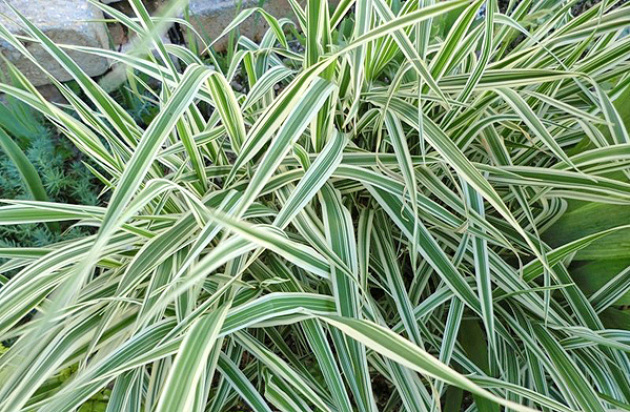
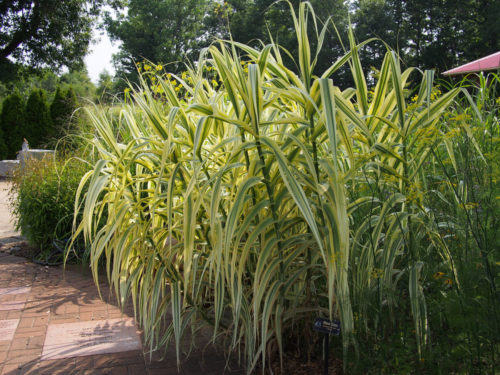
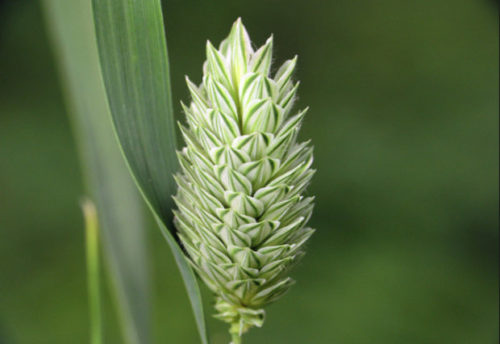
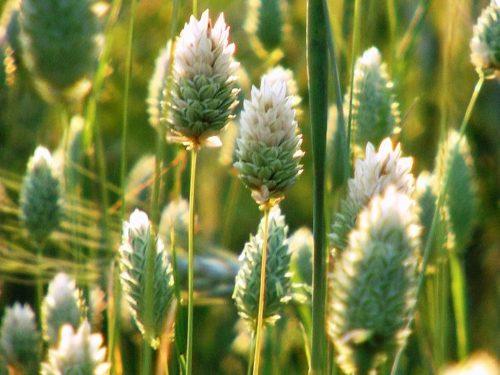
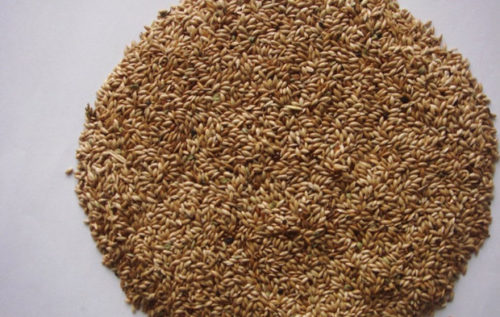

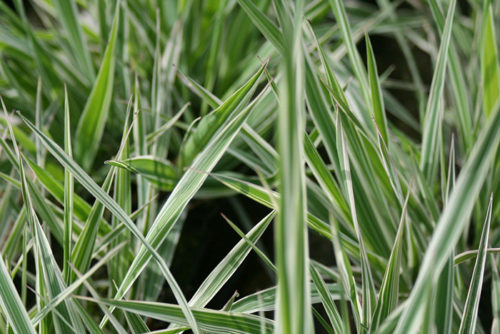
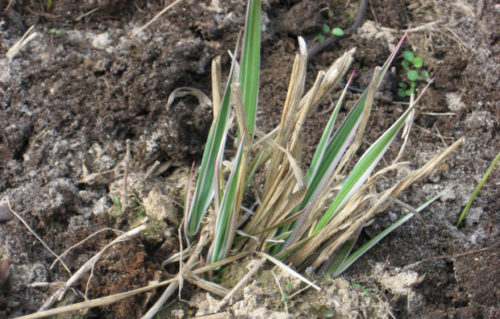
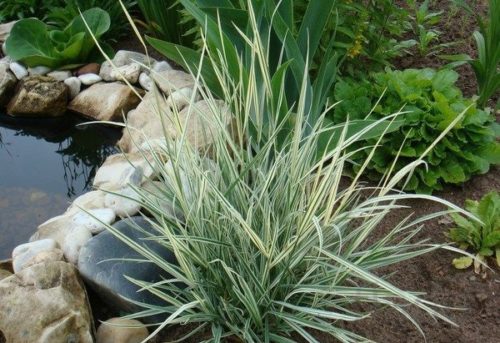

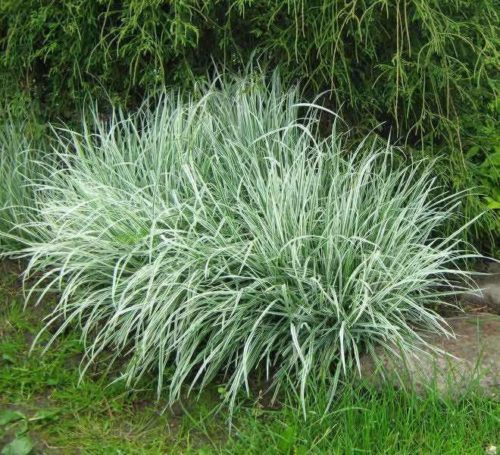
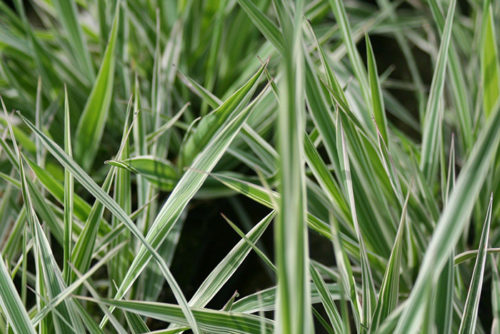












 Start a discussion ...
Start a discussion ...